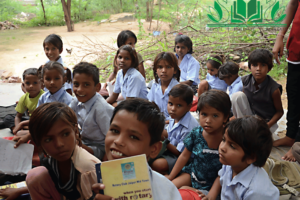
Overcoming Post-COVID Challenges: Difficulties Faced by Teachers in India
The COVID-19 pandemic has drastically transformed the education landscape worldwide, forcing educational institutions to shift to remote learning abruptly. As the pandemic gradually improves, schools in India have started reopening with in-person and online classes. However, teachers face many challenges in adapting to this new normal. In this article, we will explore the difficulties teachers face in India as they strive to resume teaching after the coronavirus outbreak.
1. Technology Divide:
One of the most significant obstacles teachers face is the glaring technology divide among students. While urban areas may have better access to technology and internet connectivity, rural regions and economically disadvantaged students often lack the necessary resources. This digital divide hampers the effectiveness of online teaching and puts additional pressure on teachers to find innovative solutions to ensure equitable access to education for all students.
2. Classroom Adaptation:
Teachers are accustomed to a traditional classroom setup where face-to-face interactions, group discussions, and hands-on activities are crucial in learning. The sudden shift to online teaching during the pandemic has disrupted this dynamic. Returning to physical classrooms while adhering to social distancing norms poses a new challenge. Teachers must adapt their teaching methods and redesign classrooms to ensure the safety and well-being of students while still providing engaging and effective instruction.
3. Student Learning Gaps:
Extended school closures and disrupted learning patterns during the pandemic have resulted in significant student learning gaps. Teachers now face the daunting task of addressing these gaps while simultaneously progressing with the curriculum. Identifying individual student needs and providing tailored support requires additional time and effort from educators. They must employ remedial strategies to bridge these gaps and ensure no student is left behind.
4. Mental Health Support:
The pandemic has taken a toll on the mental health of students and teachers alike. The sudden shift to online learning, the fear and anxiety associated with the virus, and the overall disruption of routines have impacted the emotional well-being of individuals. Teachers are now not only responsible for academic instruction but also for supporting students’ mental health. Balancing these dual roles requires training and resources to ensure students receive emotional support during these challenging times.
5. Workload and Burnout:
Teachers are already known for their heavy workload and their immense dedication to their profession. The pandemic has further exacerbated these challenges. Teachers now face increased workloads as they navigate the complexities of hybrid teaching, grading assignments, and ensuring students’ well-being. Continually adapting to changing circumstances and the pressure to meet academic goals can lead to burnout. Adequate support, professional development opportunities, and recognition of their efforts are essential to prevent teacher burnout and attrition.
Conclusion:
The COVID-19 pandemic has presented unprecedented challenges for teachers in India. They have had to navigate uncharted waters, from bridging the technology divide to adapting to new teaching methodologies. As the education system adjusts to the post-pandemic era, policymakers, educational institutions, and communities must recognize and address these difficulties. By providing teachers with the necessary support, resources, and training, we can help them overcome these obstacles and ensure the continuity of quality education for all students.




